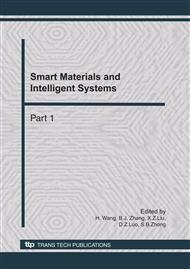p.857
p.863
p.868
p.873
p.879
p.884
p.888
p.894
p.899
Effect of Friction on Billet Deformation during Multi-Axial Compressions
Abstract:
The effect of friction on compression load, effective strain, damage value and maximum principal stress were analyzed by rigid-plastic finite element method during multi-axial compressions (MAC). The results show that with the number of compressions, the maximum compression load increases gradually, the effective strain distributes ringwise and the maximum effective strain is in the center and the minimum at the surface. The damage is inclined to appear at the barreled shape perpendicular to the longitudinal axis. With the increase of friction coefficient, the maximum compression load, strain inhomogeneity, damage value and maximum principal stress increase under the condition of same number of compression. These results indicate that the friction is adverse during MAC. Appropriate measures should be adopted to decrease the effect of frictional force.
Info:
Periodical:
Pages:
879-883
Citation:
Online since:
October 2010
Authors:
Keywords:
Price:
Сopyright:
© 2011 Trans Tech Publications Ltd. All Rights Reserved
Share:
Citation:


